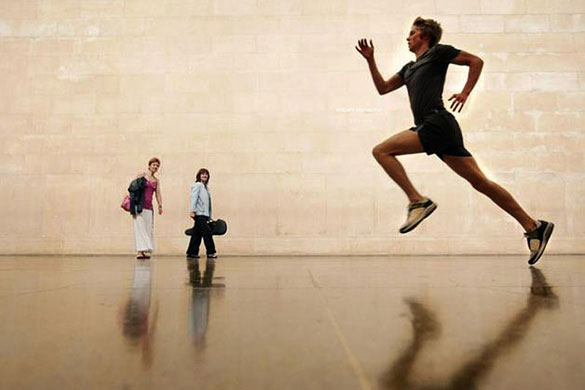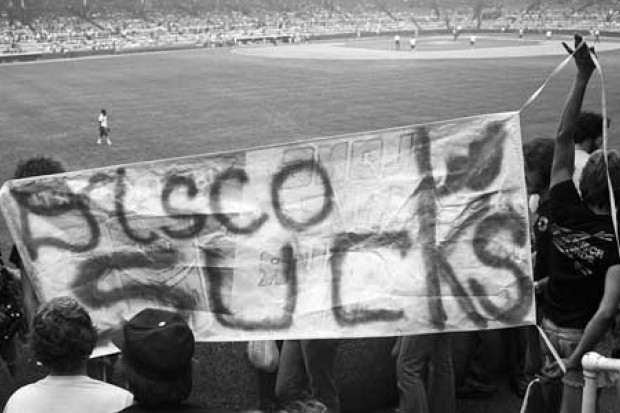
Martin Creed’s Work No. 850, an athlete running through the Tate Britain gallery. Image: Martin Creed.
What Living is Like
Martin Creed, Café OTO, London, 2 March 2011
The energising power of Turner Prize winner Martin Creed’s conceptual art lies chiefly in its brutish but clever simplicity, refusing mystification and celebrating its own obviousness. His most famous work, Work No. 227, the lights going on and off, involves exactly that. Work No. 610, Sick Film, features a series of twenty-somethings walking into a brightly lit room and making themselves vomit. When this film was played before Creed’s concert at Café OTO it inspired everything from hearty laughs to groans in the packed and heaving crowd – everything from boredom to sheer excitement. Creed’s art could be mistaken for po-faced conceptualism, but the happy way in which it explores apparently banal acts or ideas translates to its reception: there is little or no pretension or puzzlement in how these works are given or received.
The same can be said of Creed’s music. Though on the surface much more libidinal and emotionally appealing than some of his drier visual pieces, Creed’s music works within the same language of ideas, performed by a fairly standard five-piece rock group of guitar, bass, synthesiser, drums, and one player who switched between tambourine and laptop. With Creed providing lead vocals, it presents a joyous racket that at times resembles post-punk like Gang of Four, and sometimes harsher stuff like Teenage Jesus and the Jerks, but it is mostly sui generis: always charmingly off-kilter and uniquely bright, this music is open to levity, and to the levity of invention.
Titles and concepts dictate content: ‘Thinking/Not Thinking’ featured two chords, one assigned to each part of the title, which, declaimed loudly, comprised the total lyrical content of the song. On another song the band ripped through what was basically a one-chord vamp, whilst Creed sang the alphabet, repeating each letter a few times to fit the phrase (a similar trick was later accomplished with the numbers one to 100). And then there was the film of an erect penis slowly raising up, and then down, accompanied by a rising and then falling and deflating chromatic scale. This, like much of the performance, played out to surprisingly fun effect.
Most of the songs ran to about a minute, though some were longer, and all featured a strong sense of tonal and rhythmic invention (I was particularly struck by the frequently knotty way in which eight-beat phrases were divided up). These might seem like smaller details amongst the wider conceptual carnival, but they are part of what gave the music life, what lifted it above bar-room punk. The other part of that lift came in the charged and excited execution of apparently banal concepts. In ‘Thinking/Not Thinking’ Creed ‘tries to describe what living is like’, and the funny thing about this concert was that it seemed closer to describing that feeling for me than so many other more complex and elaborate attempts.
Published on 1 February 2011
Stephen Graham is a lecturer in music at Goldsmiths, University of London. He blogs at www.robotsdancingalone.wordpress.com.












